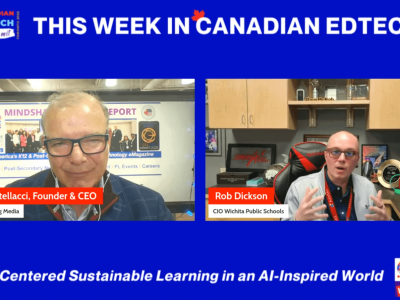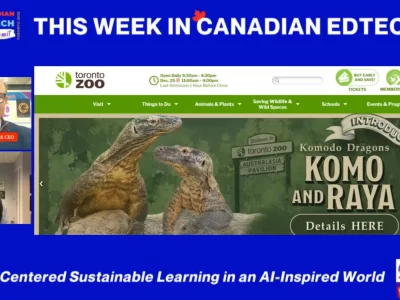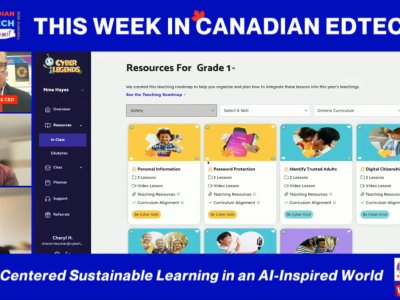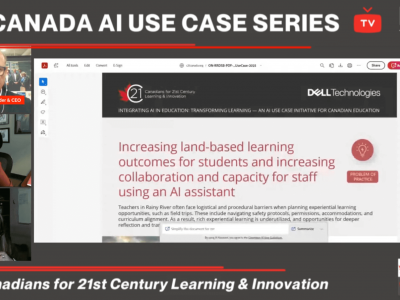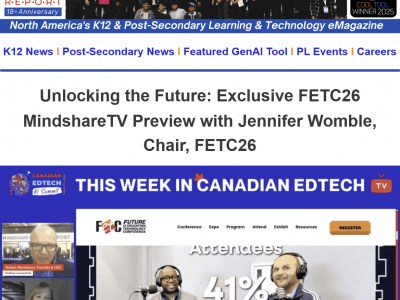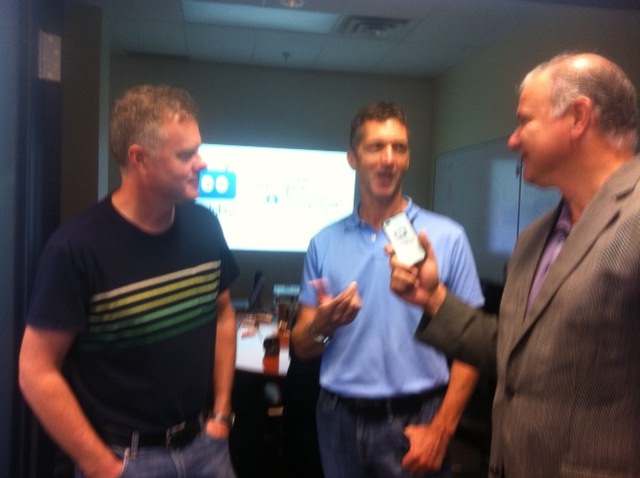The winners for MindShare Learning’s Classroom of The Future contest have been announced in this issue of our publication. Each year we continue to see teachers and students working together to showcase what they’re doing in their programs to take learning to the next level. This year’s submissions were simply outstanding! We received submissions from across our country and the judging proved to be challenging.
What can we learn about technology and education, and the classrooms of the future from these presentations? There are a great many take aways, but perhaps, at least in my mind, three key observations can be made about the submissions. These observations are general in nature; we could dive more deeply into the observations but that would require classroom visits and more data, both of which we cannot do here and now. Regardless, I was quite pleased by the connections between solid pedagogy which included many of the oft touted ‘drivers of change in achievement’ and the use of technology, not as a focus, but as an enhancer and empower of student and teacher learning experiences. This is where we saw some great examples of high level SAMR and TPACK teaching and learning.
Many questions still remain however and as we move forward with this contest we will continue to explore, as best we can given this ‘vehicle’, what impact technology is having on teaching and learning. We hope to move beyond simple classroom experiences and explore school-wide and even system-wide impact with pedagogy leading the charge, and technology aiding the process into deeper learning. Indeed, this can be achieved only when there’s a true marriage of what we know about pedagogy – and perhaps ‘new pedagogies’ – and the way technology can be leveraged as one of the key enhancers in student achievement. Teachers also need to be collecting the relevant data about what they’re seeing with relation to students achievement and the presence and use of innovative technologies. This data should be shared school and system-wide so that progress is measured and impact on student achievement is catalogued and studied with the desire of being even more innovative and impactful. As we move forward, we hope to give you a ‘glimpse’ into this future of teaching and learning with technology.
One caveat to these observations: new ‘stuff’ in the form of applications, tools and ‘apps’ do not necessarily necessitate a connection to ‘better learning’. If you find something that is making an impact on achievement stick with it and make sure that you spend the time and resources on implementing this ‘impactful tool’ across your school, or district. Simply jumping on a ‘technology bandwagon’ because it’s new and exciting can easily lead you down a road that achieves little, or worse, has a negative impact on teaching and learning. This doesn’t mean you shouldn’t be open to innovation; but it does mean that you should, as John Hattie states, “Know Thy Impact”. Continuous and reflective observation and assessment for learning will help you gage whether you need a new approach, or a change in the way you are using technology.
These are my three general observations gleaned from the submissions to The Classroom of the Future contest. They are in no particular order.
STEM and Inquiry are HUGE
The number of submissions that focused on STEM initiatives were many. Of course, this makes sense given the global push to make STEM a huge priority in schools and districts. And it also makes sense because Technology empowers the Science, Engineering and Math components by giving teachers the opportunity give their students easier access to real-world opportunities and challenges. And STEM is powerfully engaging and provide 21st century learning contexts that are second to none.
Moreover, Inquiry-based learning is simply a proven method for engaging students and leading them more deeply into developing 21st Century skills like collaboration, communication, critical thinking, and creativity. In short, there is a greater impact on achievement when students are involved in the inquiry process. And this approach gives teachers and students huge opportunities to learn from each other and to explore new ideas, new problems from a perspective that initiates deep learning. Teachers become change agents and help to activate student learning by challenging them with learning contexts that students can take risks and learn from their mistakes.
Coding is Growing, Exponentially
Coding was everywhere! And the examples were impressive. From classes using coding to tell stories, to other classes coding their own original games and applications, to another context where one class of students connected with another class halfway around the world to collaborate on coding, emphasized the way this skill is gaining even more ground in classrooms both nation-wide, and around the world. Coding provides another context for developing skills that are needed in the 21st century. I was quite impressed by the creative ways teachers used coding in their classrooms. Lots to glean from these examples!
It’s also important to note that coding is accessible at all levels. Block coding gives early primary and junior students the opportunity program complex algorithms while helping them to understand the basis syntax of coding. And the number of online coding sites is simply growing with support for teachers unfamiliar with coding to even the more experienced teachers who can then move on to more challenging coding opportunities.
The Maker Movement is Moving
Real-world, challenging problem solving opportunities in creative contexts speaks about maker spaces. And these spaces are becoming more and more viable across the education sector. 3D design and printing opportunities abound with many different online applications available for students to design and model devices, buildings, or objects that students then create and apply in a real-world scenario. The Maker Movement engages both boys and girls with challenging hands-on opportunities that allow them to take charge, and then often let both teacher and student learn together, with the teacher acting as an activator, or change agent. Many of the submissions involved these makerspace elements, and I think we’ll see even more of this developed as we move even more deeply into connecting our libraries with learning commons.
